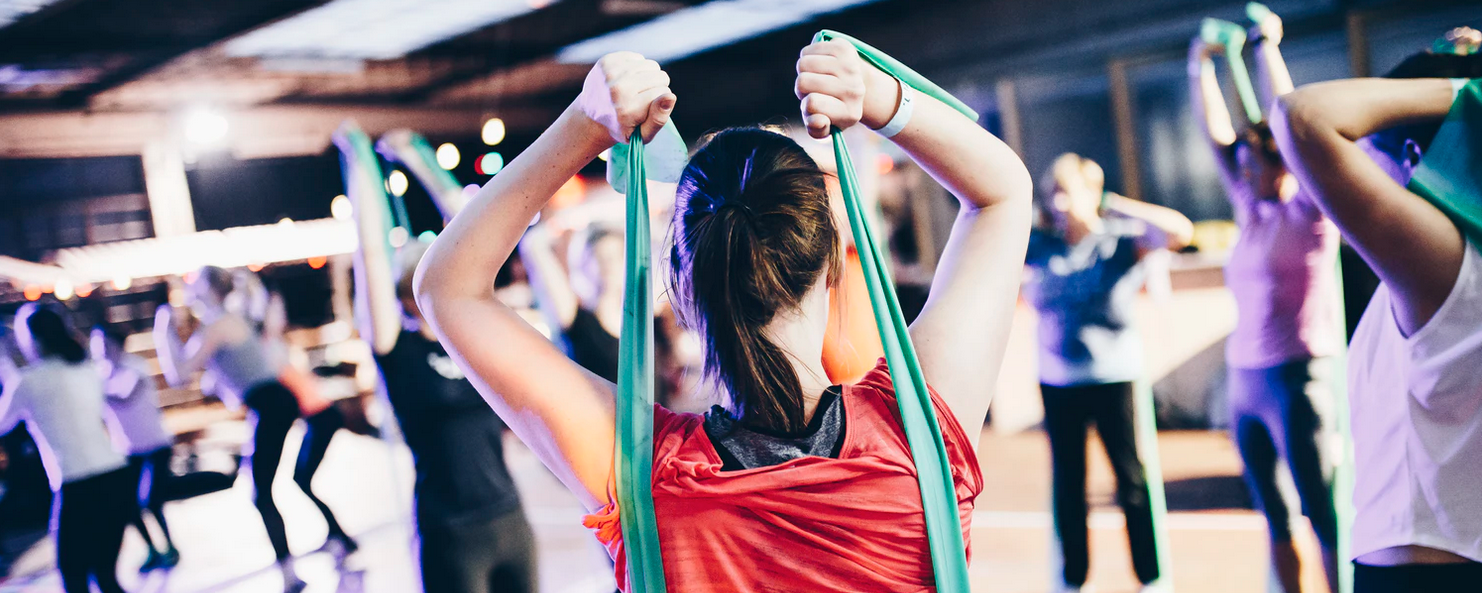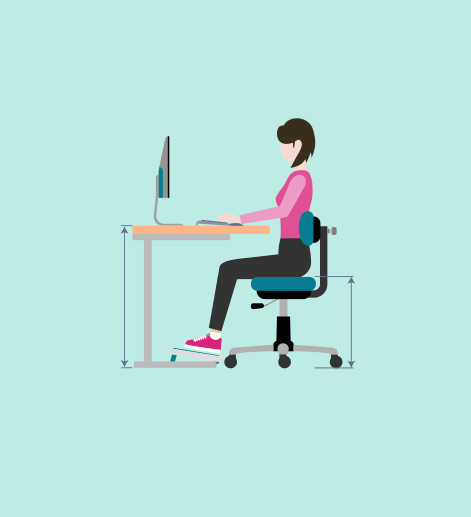 We’re all so excited to be returning to our happy place. Our dance schools, our gyms!
We’re all so excited to be returning to our happy place. Our dance schools, our gyms!
It’s been 12 weeks since we had the chance to be in these spaces and right now we’re just excited to get in and get started. Immerse ourselves in the love of something we’ve longed for! See our friends, our teachers and just dance!
Any change to our routine needs our body and fitness to have time to adapt to the changes, it can be tricky to enjoy our new found enthusiasm without overdoing it.
Kinetica Physio wants to be able to assist you during this transition. Below are our top tips for thriving and safely returning to our precious exercise spaces.
Tip 1: Safety in the first week
Seeing your fellow students and classmates is exciting. A new space also makes our balance feel off and our body can feel a bit disconnected. Go with the enthusiasm and take a few breathes to focus on the small things in the first week.
Going back into class:
- Spend the first 2-4 weeks enjoying the freedom of increased space
- You will feel more tired without necessarily working harder in the first two weeks just because you are working in a larger space
- Focus on doing the same amount as you have been previously
- Specifically for pointe, jumps and solos: aim to complete the same amount of these in the studio as you were doing at home. Be mindful of building your load progressively
- It will take some time to build up to your previous level. It usually takes 7 weeks to double your activity level safely
- Be positive – set yourself small goals and concentrate on these for now. It’s important to stay present and make your return to the studio about hope and positivity
- Your teachers know your previous level and training over the isolation period and will know how much to push you when you return
Tip 2: Looking ahead and setting goals
Dance schools are aware of the many pressures of returning to dance. There are already Eisteddfod dates being announced, exam dates being set. Although it may not be confirmed, we also thinking about end of year concerts. Perhaps also for the more senior students, auditions and plans to move overseas. We all want to be in great shape and well prepared for these challenges ahead. Although there may not be any answers right now, we are looking towards the hope of these normal milestones.
- Calculate the average of your dance and activity load over the past 4 weeks and try to keep it at that same level until the upcoming July holidays
- Set yourself short term goals that are related to your classwork.
- SMART:
- Make it specific and think about how you will know when you’ve reached your goal (measurable). Ensure that what you’re working towards is achievable & realistic
- Think about how long it should take you to build up (time to get there)
- Work with your teacher to establish your priority short term goal: eg getting ready for your ballet exam
- Try to establish which component is the most vital activity to focus on. For example, think about whether it is the knowledge of the syllabus, endurance & fitness or placement & technique that needs work
- Your short term goals will collectively help to achieve your long term goals which we will set to achieve later this year and beyond
- Start to run your solos in small intensities
- Start to keep a diary to track your hours and intensity of dancing. Keep a record of your hours and then try to rate how intense you have found each of your classes.
- 1 – a very easy class
- 10 = the most intense exercise possible
Tip 3: The growing dancer
Some additional considerations for the growing dancer. Having gone through a period of reduced activity, just like in the holidays, our body uses this increased energy for growth and repair. When bones change length and size – the knowledge of where we are in space has to adjust over a few weeks. Muscle length and strength are also left behind. Changes to your bone and muscle length may not happen equally and this may leave you feeling a bit uncoordinated or off balance.
Growth spurts can create sudden changes in strength or tightness that takes a number of weeks to even out. Be patient as you transition to the studio, as your body may not move the same as and may respond differently. During this time growth plates are highly active and are more sensitive to changes in load. This growth plate tissue is wedged between the bones or positioned at the junction between the muscle and the bone. Little niggles during this time are normal, however look out for those lasting more than 3 days or progressively worsen.
If you notice a growth spurt, it’s time to be cautious of a few extra things.
- Avoid vigorous stretching where you are contracting/relaxing the muscle at end range
- Build back the strength before focusing on gaining back any lost range (strong before long). For example if you have lost depth in your plie, try to ensure that you have fabulous strong controlled rises before stretching into your plie length. Your muscles are more likely to lengthen when they know the joints are protected.
- Monitor fatigue levels – growing takes lots of energy and you will often feel more tired with easy tasks
- Re-learn your balance – concentrate of tasks that previously may have been simple
- Balance on 1 leg with your eyes closed
- Balance in coup de pied and round the leg
- Practice dynamic balance – pick up an object while balancing on 1 leg
Tip 4: The first month and beyond
It’s all about adaptation…we need to consider fatigue and fitness. Fatigue factor is what you do this week. Fitness comes from the average of your last 4 weeks of activity. With return to the studio, your body will need to adapt to change. It’s important to train smarter and harder. With very fast changes in activity, the risk of injury increases. Although it is only a risk, we need to thoughtfully progress by using our goals and focusing on listening to our teachers and body.
Let’s talk about grading up to exams and concerts. At low levels of dancing – doubling the load will take only a week or two. Eg. if you’ve been doing 1 hour of jumping per week at home; then getting to 2 hours of jumping and higher intensity should only take a week or so. At moderate to high levels of dancing, doubling the higher intensity activities like jumping and pointe work should be done gradually over about 6-7 weeks. Eg. if you have been doing 7 hours (1 hour per day) of jumping/running; then building to 14 hours of jumping and intensity should be graded up over 6 weeks.
The things that have been missing most from home based training are the components to build up to. Going at top speed, running solos and performance pieces; power and endurance are all things to progressively increase.For example when running higher intensity solos, in the first week or so – running once and then focussing on each technique element may be enough. Over the next 2 months increasing it so that you can run the solos a few times with minimal rest. Then building up further by repeating this several times per week.
Remember to factor in the upcoming holidays and then those in September, to ensure that you keep up some cross-training to continue to work on your fitness. This helps when returning to training so that you are strong and ready to continue progressing and building your load faster/sooner/more quickly after returning from holidays.
Tip 5: Recovery Strategies
Increasing any activity, particularly while the body is changing, creates an increased need for rest and recovery.
Measuring Fatigue
When the body is working and starts to feel depleted, it will make simple things start to feel harder. This isn’t just a feeling- your heart rate and blood pressure will be higher & you’ll sweat more for the same activity. These are all early warnings that you’re fatigued. The stress of fatigue helps the body adapt and repair. Feeling consistently fatigued can be counterproductive and lead to overload and injuries.
You can monitor fatigue by:
- Rate how you feel at the start of the day (after breakfast – 30 minutes after waking)
- Rate your dancing intensity: 1= breathing | 10= incredibly intense
Sleep
Good and consistent sleep habits are shown to be the best predictor for preventing injuries and recovering quickly. As the body adapts to change, it needs more time to recover and heal. Research shows that by keeping a consistent sleep routine and sleeping slightly more, the body can be more accurate, faster and more powerful.
Our top sleep tips:
- Avoid technology for the 60mins before sleep (no the night filter doesn’t work)
- Aim for 9 hours per night as a teenager or 8.5 as a young adult
- Head to bed at a consistent time each night
- Use the bed only for sleeping
- Have a regular bed time routine to wind down slowly and be ready to fall asleep
Tip 6: Injury prevention
As we adjust to the changes in schedules, training and performance for the rest of 2020, it is important to remember the strength and conditioning training that we have been doing before and during our time away from the studio. Injury prevention is most important in the next 6 weeks to ensure we are protected as we train in person with our teachers and friends and not sitting out due to injury.
We need to make sure that our body has the strength, mobility and control to complete the skills and that we need and to perform at our optimum level. This is where injury prevention exercises or “pre-habilitation” is important.
Here are starter exercises to prevent injury (See video):
- Single leg heel raises (for calf strength) to prevent foot and ankle injuries. Rise up onto the ball of your foot making sure that your toes stay long and your ankle straight as you rise up and down.
- Bridges (for glute strength) to prevent hip and lower back injuries. With your feet hip width apart peel you back off the back so that there is a straight line from your knees to your shoulders, lift your arms to challenge yourself and reduce the amount of support.
- Single leg stretch (for abdominal strength) to prevent lower back injuries and improve balance, turns and control of pelvic alignment. Curl up so that your torso is in a small crunch position then bend one knee towards you and extend the other long. Hold onto the bent knee and deepen the abdominal curve before swapping legs.

